Southwest tour under changing moon phases
3 Comments
During the two last weeks of September, I took a road trip in the Southwest. One of my goals was to create landscape photographs by night in the National Parks. It was productive, but tiring. In the days of film, sensitivity was too low for stars (unless you wanted trails, which I am not that interested in), so you got to sleep between dusk and dawn. Not anymore with high-ISO abilities of recent digital cameras and lenses, which let you photograph in almost total darkness ! I started my trip under a new moon, and finished it with a full moon. I wanted images where the landforms would be clearly visible, instead of just being silhouettes against the starry sky. This involved a range of strategies depending on the phase of the moon that I’ll illustrate with a dozen of images in chronological order. Let’s take a quick tour of the Southwest National Parks by night.
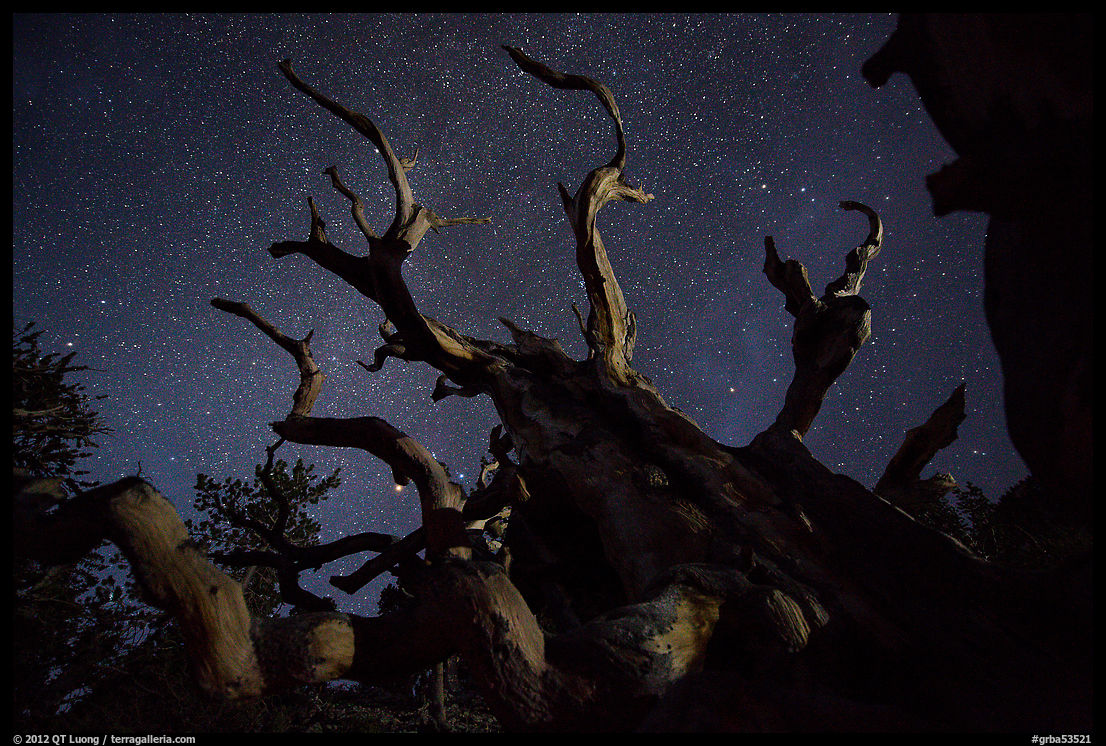
I started the project with the Bristlecone Pine trees of Great Basin National Park. Since they are the oldest living things, I liked the idea of photographing them with the ancient light of stars. Great Basin is far from major population centers, so its skies are exceptionally dark. However, I wasn’t off to the best start for this project. As I headed by nightfall up the 1-hour trail to the grove, I was met halfway by a team of filmmakers/photographers who were hiking down. It turned out that they had set time-lapse sequences for a NPS-funded project. They asked me not to disturb them with a headlamp. The trail was dark, since there was no moon. I agreed to come back only in the later part of the night, when their sequences would be finished. I got up before 3am, but it takes a long time to find a subject in the dark, then refine your images. By the time I was done composing this photograph, the sky was already starting to lighten, and the Milky Way was long gone. Since my dark time was so short, instead of deploying my own lights, I used the light of a lantern the team had placed more than a hundred yards away. Canon 5Dmk3, Nikkor 14-24, f/2.8 15s ISO 6400 (more on this lens in the next blog post).
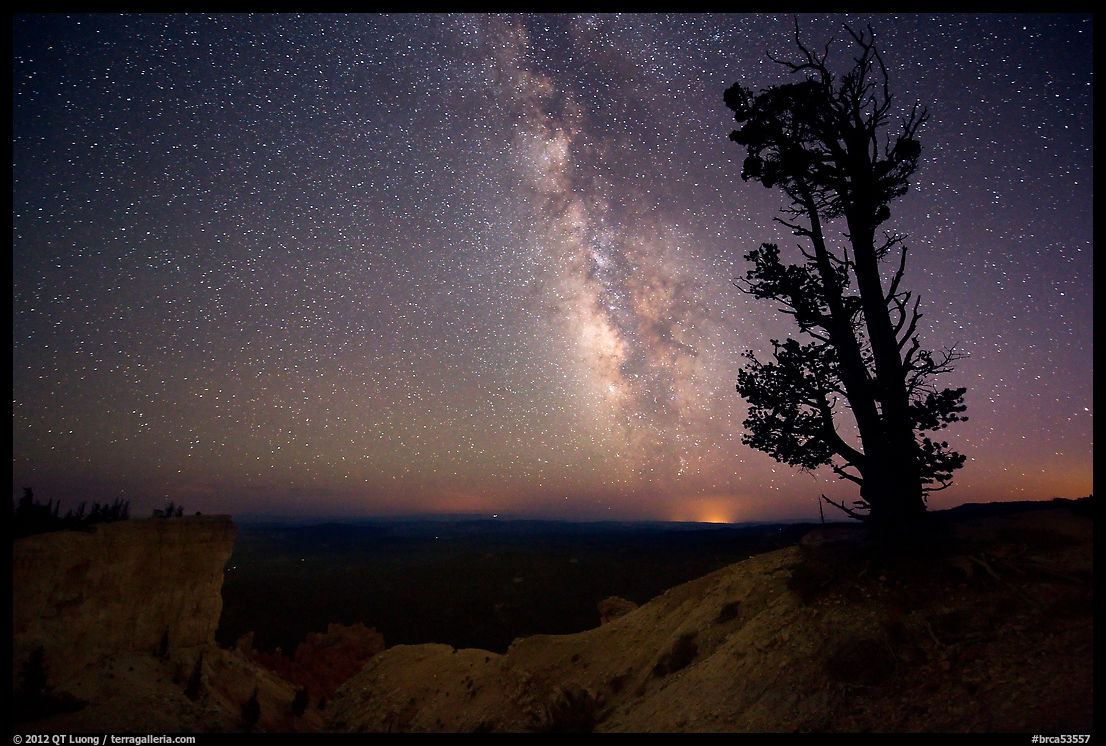
The next night, I resumed photographing Bristlecone Pine trees, but this time in Bryce Canyon National Park. The moonless night is the best for letting the Milky Way and stars shine brightly, but the landscape is usually too dark. However, for this shot, there was a bit of light pollution, from distant artificial light sources, that was enough to cast a bit of light on the canyon. Since this was enough to give a sense of place, I chose to let the tree be seen as silhouette rather than lighting it. Canon 5Dmk3, Nikkor 14-24, f/2.8 30s ISO 6400
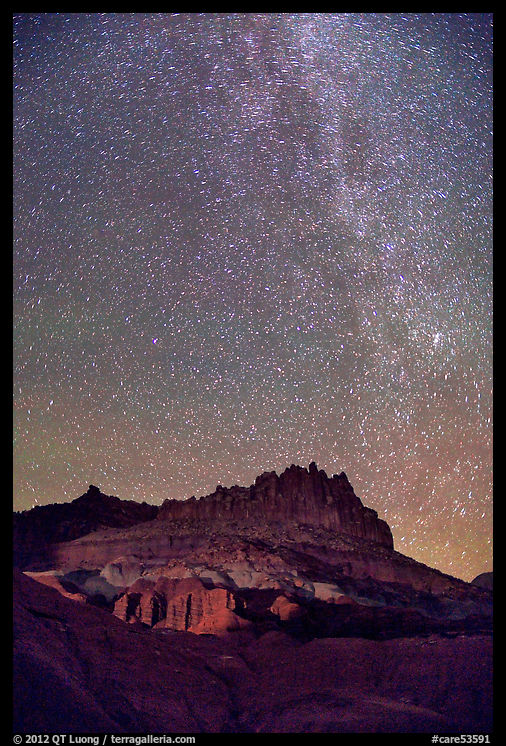
In Capitol Reef National Park, I photographed the landmark Castle. The visitor center lights were enough to accent the opposite cliffs, but not the more distant Castle, so I lighted the sizeable rock formation using a very bright (1000+ lumens) LED torch that was held by a tripod and clamp, as I photographed from a point of view hundreds of yards away to create some cross-lighting. Canon 5Dmk3, 24/1.4, f/1.4 20s ISO 3200
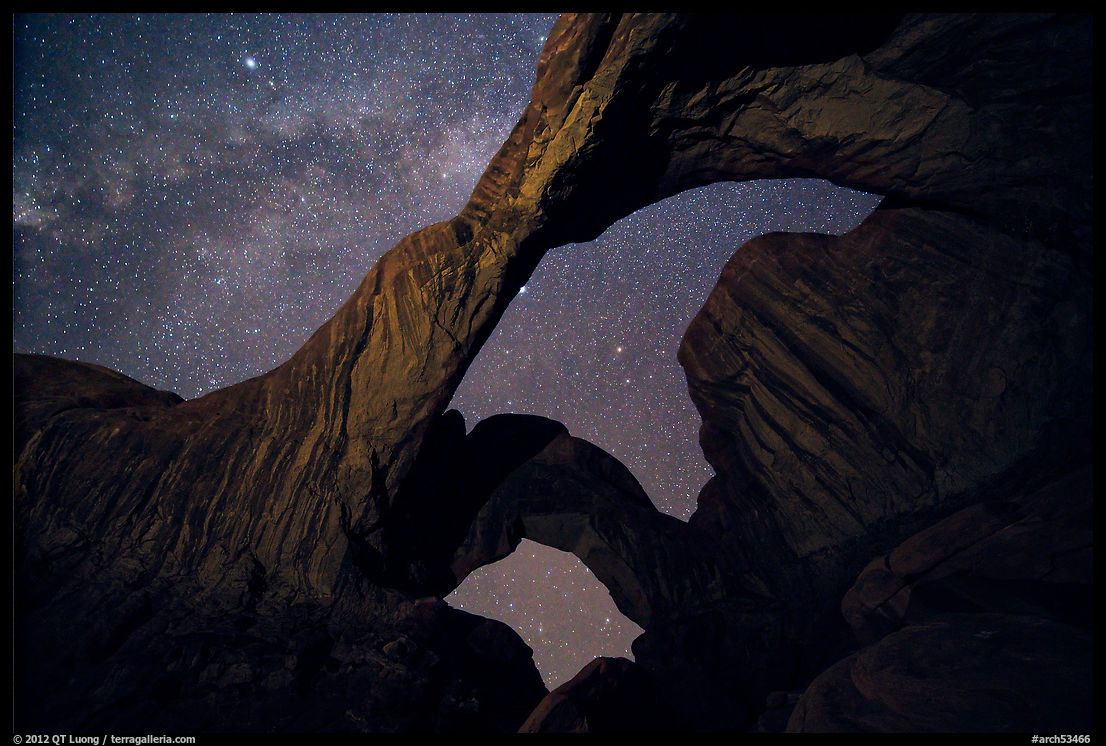
Looking up at the depth of the cosmos through Double Arches in Arches National Park was a magic experience. I lit the arch at a much closer distance. I could have easily illuminated it very brightly with the LED torch, but I used instead a 200 lumens camping lantern because it looked more natural to lit it just enough to bring out some detail, but not overwhelm the stars. I adjusted the illumination by varying the position of the lantern until it felt right, rather than relying on unpredictable and difficult-to-reproduce light painting. Canon 5Dmk3, Nikkor 14-24, main frame f/2.8 30s ISO 6400. Although not strictly necessary, I blended it in a secondary frame exposed at 4min ISO 800 to reduce noise in the arch for a higher-quality print
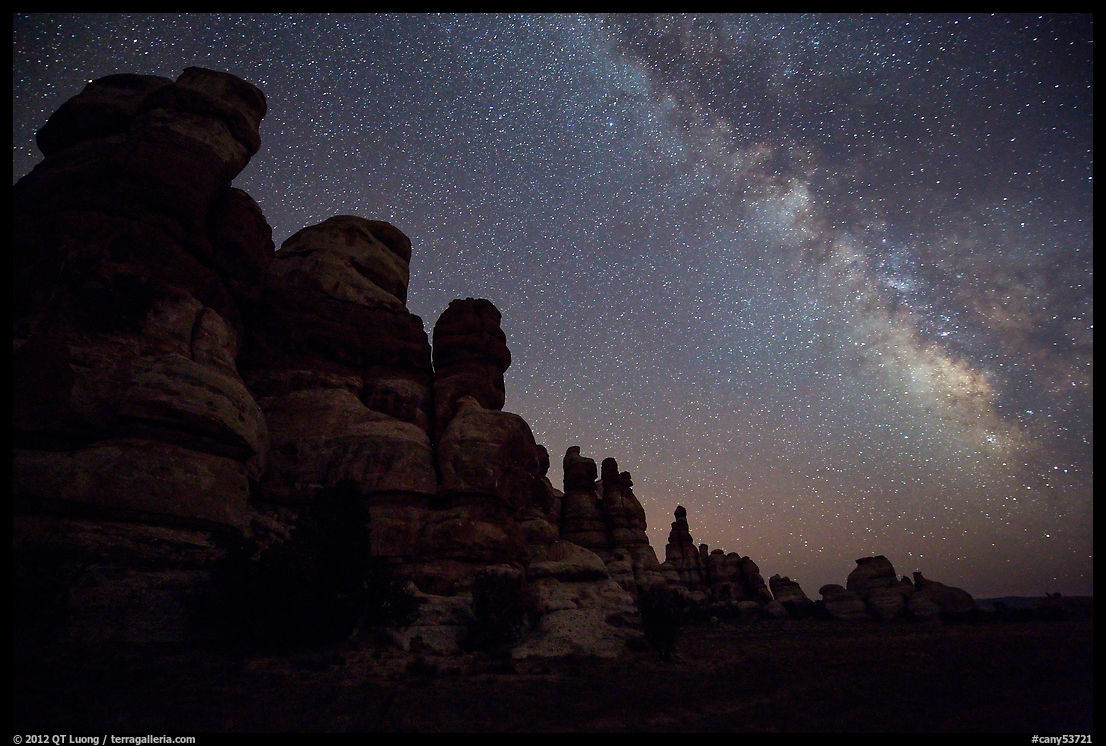
The Maze District of Canyonlands National Parks (more in a future blog post) is one of the most remote areas in the continental US. It gets seriously dark there. The dim light on the rock formations of the Dollhouse is natural. It came from a combination of thin 1st quarter crescent moon, which was appearing for the first time since the beginning of my trip, and residual dusk glow. Canon 5Dmk3, Nikkor 14-24, f/2.8 30s ISO 6400
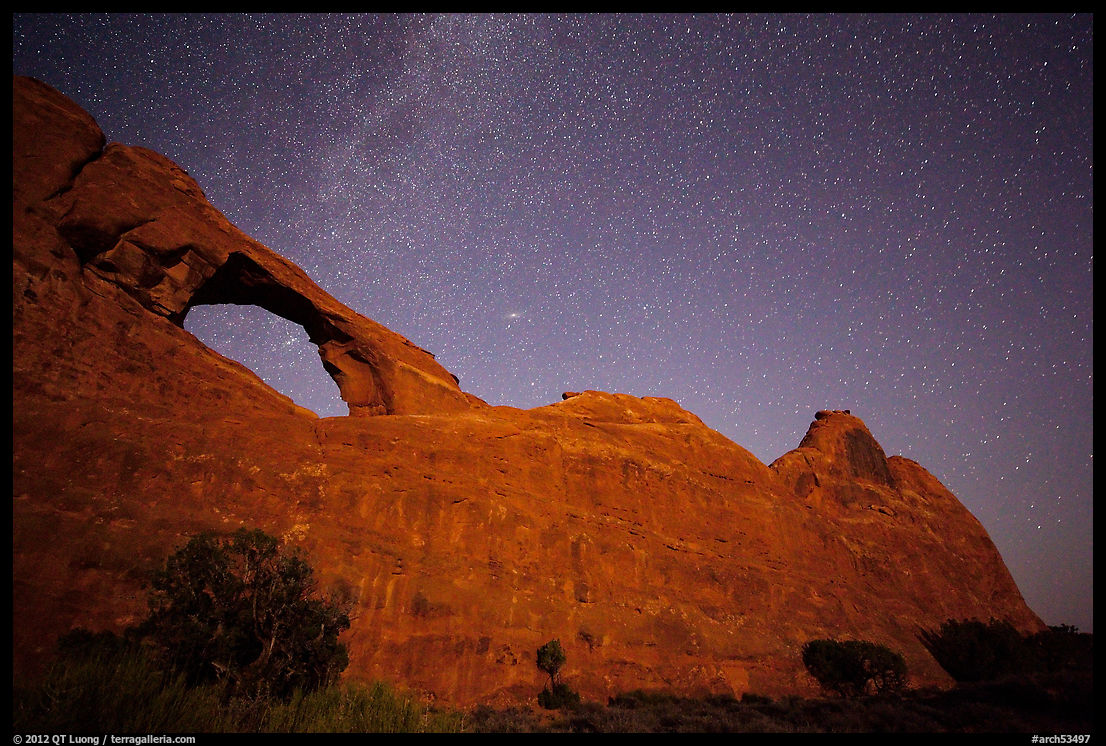
One day made quite a difference, as the moon was already high in the sky when I photographed Skyline Arch in Arches National Park the next day, shortly after sunset. There was a measure of balance, as it illuminated the whole landscape, but still left many stars visible. During the first quarter, the moon is present only during the first part of the night. This leaves you with options to photograph either a moonlit landscape or a dark landscape with very bright stars, after moonset. Canon 5Dmk3, Nikkor 14-24, f/2.8 30s ISO 6400
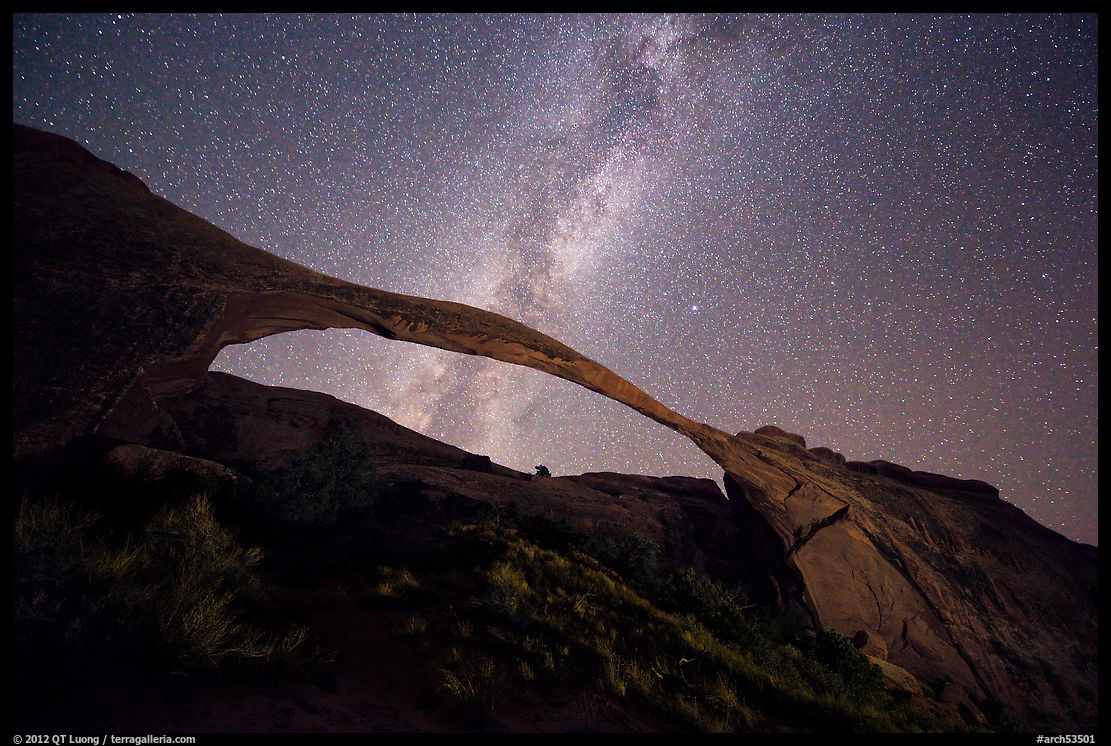
After making the previous image, I drove to the Devil’s Garden trailhead. The parking lot is usually full during the day, and the trail packed -as it is only 1.5 miles RT and flat. It was rewarding to see no nobody else there as I hiked to Landscape Arch, the longest natural arch in the world, 290 feet. The day was hot, but the temperature was perfect by night for hiking in T-shirt. I turned of my light to revel in the experience. Although the moon had set, the faint light of the stars was enough to follow the well-maintained wide trail – which felt adventurous to follow in those conditions – and to make out the rock formations. It was too dim to reveal any details in the arch, so I used again the camping lantern to light the span in a subtle way while keeping the Milky Way the brightest object in the photograph. Canon 5Dmk3, Nikkor 14-24, f/2.8 30s ISO 6400 & 4min ISO 800
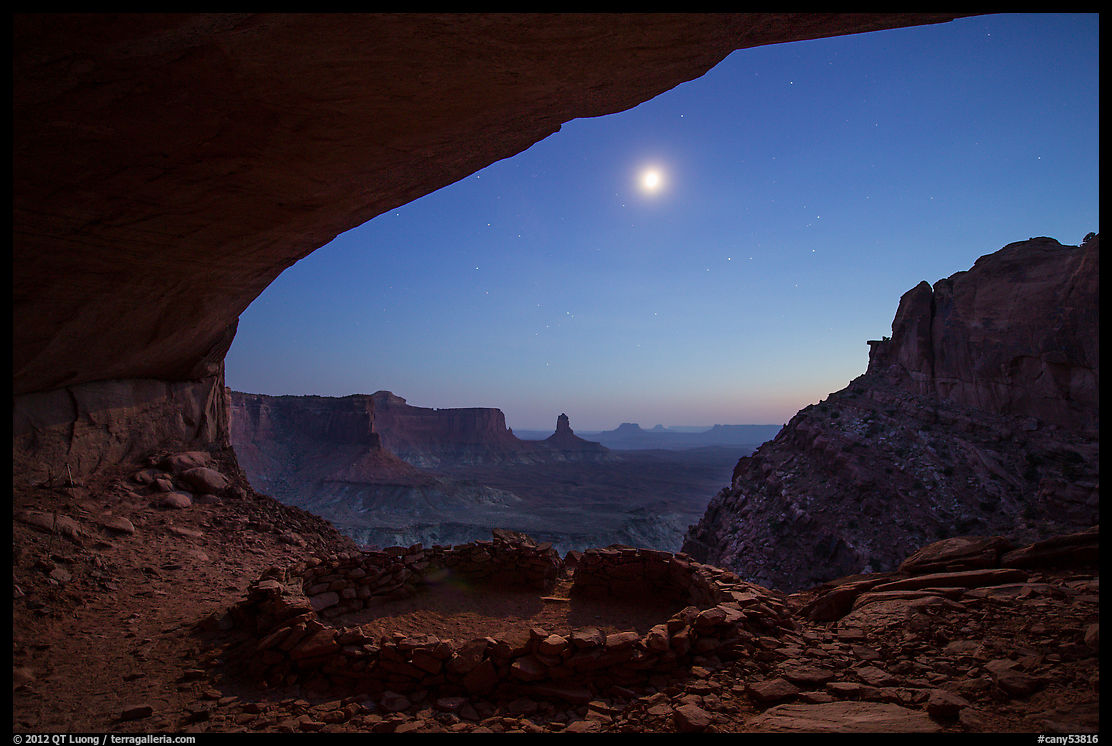
The next day, I hiked to the False Kiva in Canyonlands National Park, just in time to get there shortly before sunset. A Kiva refers in Hopi to a circular structure built by Pueblo Indians for religious purposes. It is a “False Kiva” because excavation had shown that the structure was used for daily activities rather than rituals. Yet, the extraordinary setting inside an isolated alcove hidden in a cliff confers to the site a spiritual atmosphere. The improbable and adventurous trail leading to the location adds to the mystique. Per NPS directives stating that “Class II site locations may only be disclosed to the public when visitors request the information by site name, photograph or description .. when visitors receive locational information about Class II sites, they must also be instructed in how to behave when visiting the sites”, the location is not publicized, however it is known to many photographers through the work of Tom Till and the description provided by Laurent Martres in “Photographing the Southwest”. A helpful ranger at the Island in the Sky Visitor Center provided me with precise directions from the Alcove Spring trailhead near Upheaval Dome, then wrote my name in a register. After sunset, only few stars where visible when I photographed the False Kiva illuminated by the high moon. Canon 5Dmk3, Nikkor 14-24, f/2.8 15s ISO 400 & 20s ISO 1600
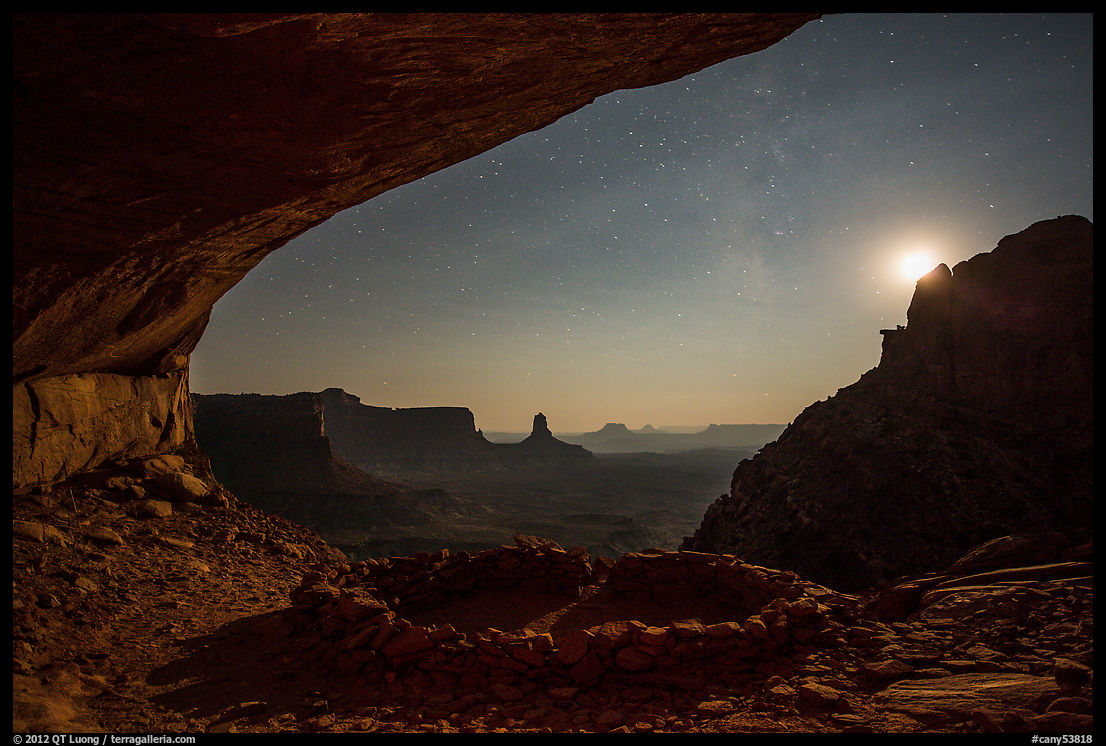
I enjoyed the near-absolute silence and stillness of the sheltered alcove, except when I got out of it to eat my dinner. A few hours later, the moon got lower in the sky and dimmer. Interestingly, although this is not visible to the human eye, just like the sun, its light also became warmer. I chose the moment just before it was going to disappear behind the cliff to create this second image. Like for the first one, it is lit only by the moon. Canon 5Dmk3, Nikkor 14-24, f/2.8 30s ISO 1600
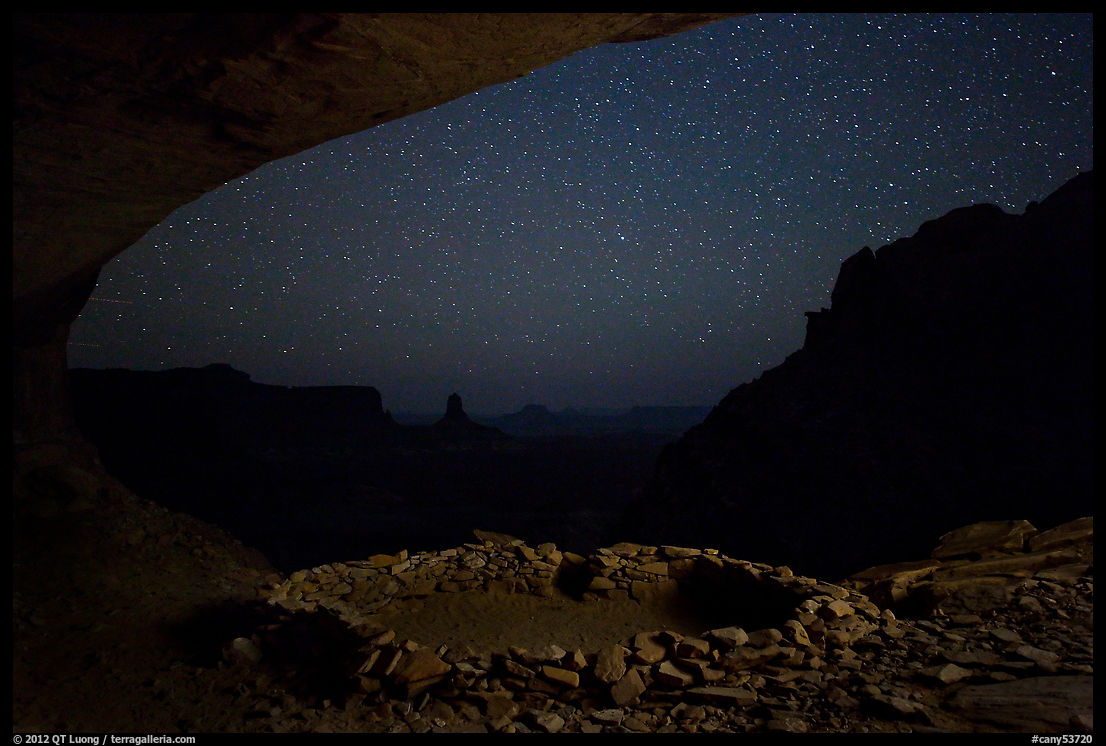
One more hour, and the moon had set. I used my hiking headlamp to illuminate indirectly the scene, by bouncing the light against a side of the alcove. I left the False Kiva around 2.45am. In spite of the dark night, I lost the social trail only a couple of times, as it was well cairned, getting to the car at 3.45am. Canon 5Dmk3, Nikkor 14-24, f/2.8 30s ISO 6400 & 15min ISO 400
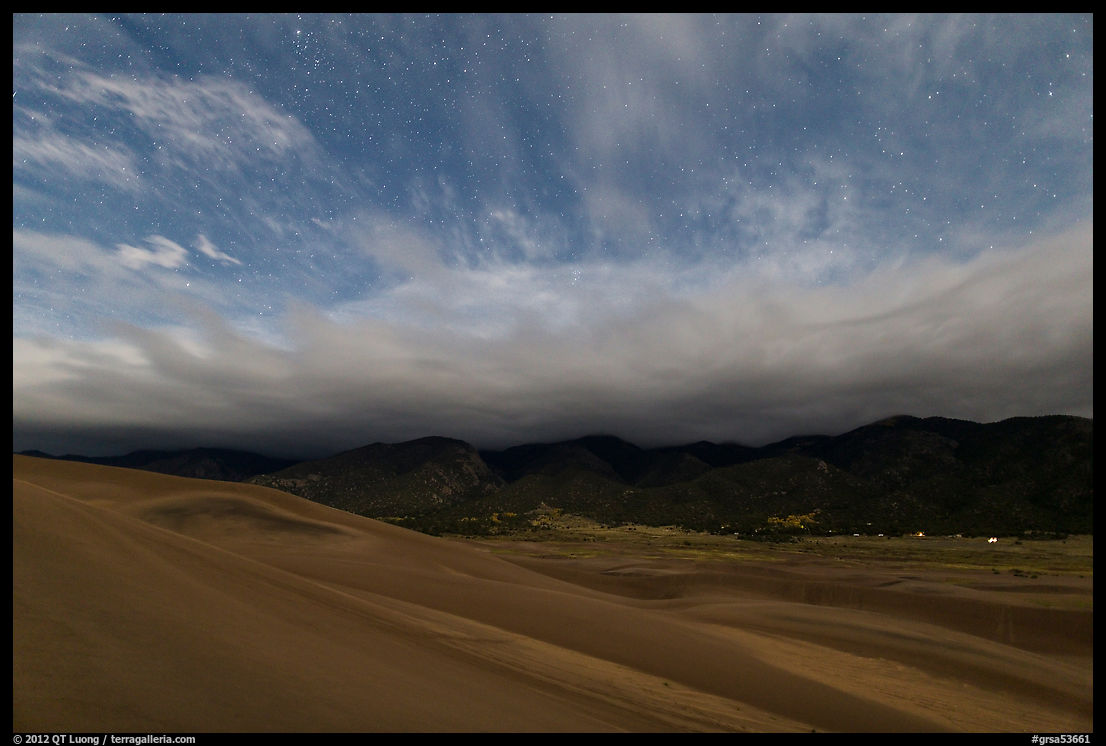
At Great Sand Dunes National Park, the moon was already half-full. At this point, a night photograph is fairly similar to a full-day photograph, except that stars are sill visible in the sky – I underexposed slightly to retain the sense of darkness. The night before, I had skipped night photography as the sky was totally overcast, so there were no stars to give a sense of night. After sunset, the sky, which had been cloudy, began to clear, so I proceeded to hike up the dunes at 10pm to photograph, enjoying the vastness and solitude. Canon 5Dmk3, 24/1.4, f/2.0 15s ISO 1600
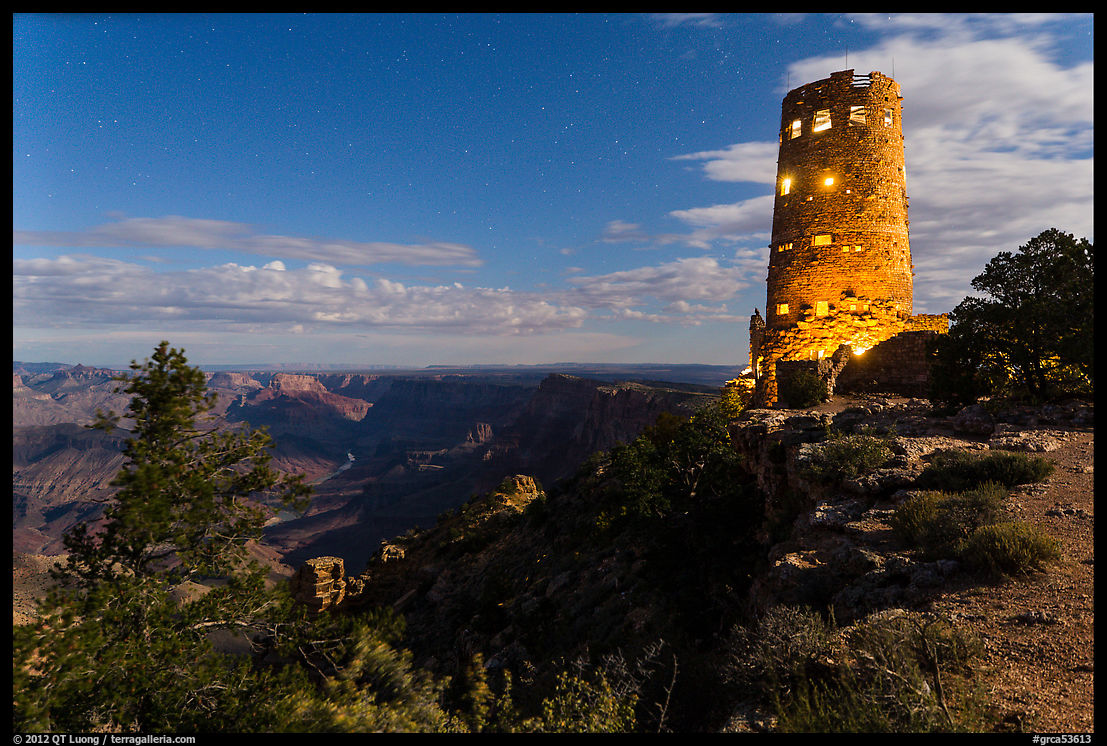
At Grand Canyon National Park, the moon was more than half-full. Although this is great for a stroll, normally this is my least favorite circumstance for night photography, as with a proper exposure, the images look almost like daytime, with only a bit of mystery added. However, the presence of the Desert View Watchtower added interest. As the building was illuminated, it stood out against the darker landscape, its lights actually providing the nocturne impression. At sunset, there was a crowd which shocked me, as it had been a decade and half since I last visited the South Rim. I could not even find a suitable spot to photograph on the rim and had to scramble down the canyon a bit. Everybody had vanished an hour later, by the time the tower stood out the best against the landscape. Canon 5Dmk3, 24 TSE, f/4.0 30s ISO 800
During those two weeks, I photographed at many National Parks locations, some quite obscure, some bustling with visitors by day. Yet, in the later case, the solitude and quiet afforded by the night had restored some of the sense of awe and wonder that I experienced there during my initial visits, some decades ago. I hope to have conveyed a bit of that mystery through those photographs, and I hope that they will inspire you to venture and explore nights in wild places for yourself.


Great work, QT! I would have been frustrated by getting turned back by the time-lapse crew.
Tu as du te régaler!!!
Comme d’hab, un super boulot.
Great work, QT!
I wish I could join Your Maze Tour 2013, but it is way out of my schedule. Do You plan on doing this every year? If so, I’ll go for it.
The Nikkor 14-24 is a fine lens, but for me, it is a bit expensive and a pain to carry and to use. I’d rather have a Tokina 11-16 with me and take my chance with a 6D and the Tokina at 16mm/2.8+ where it works surprisingly good even on full frame cameras.
A simpler, but good idea for night photography is to bring a MagLite and if You already have to deal with multi-minute exposures on a tripod, go aside and stroke gently with the light beam over your subject. With a little practise, this can produce some more remarkable imagery.